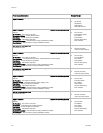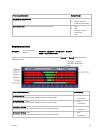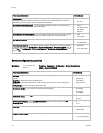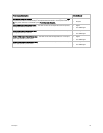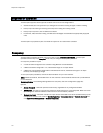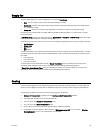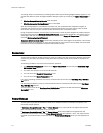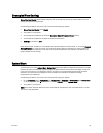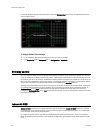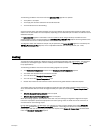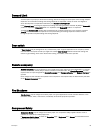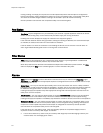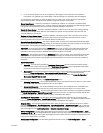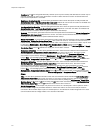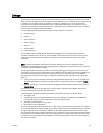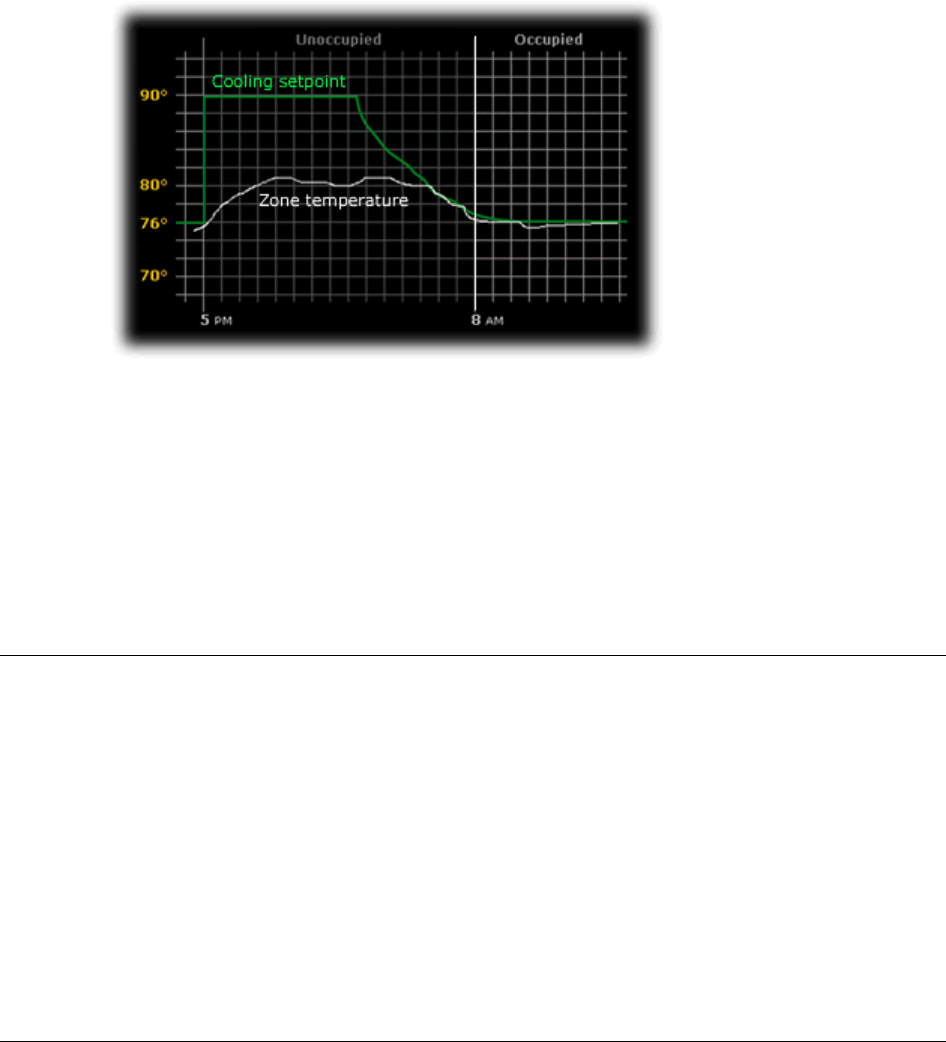
Sequence of Operation
46 RTU Open
The actual equation that the controller uses to calculate Optimal Start is nonlinear. An approximation of the
result is shown below.
To change Optimal Start settings:
1 In the navigation tree, select the equipment that you want to change.
2 Click Properties page > Equipment tab > Configuration > Setpoints.
Enthalpy control
You may use an enthalpy switch to indicate the suitability of outdoor air for economizer cooling. You can use
either an outdoor air or differential enthalpy switch. A differential enthalpy switch has a sensing device in both
the outdoor and return air streams. A differential enthalpy switch indicates when outside air is cooler than the
return air, and is available for economizer cooling. If no enthalpy switch is configured, a network point (Object
Name: oae) is available. This point is displayed in i-Vu and BACview as
Enthalpy (BACnet).
The sequence of operation for economizer cooling is the same with or without an enthalpy switch, except that
an enthalpy switch imposes one more validation on the suitability of outside air for economizer cooling. An
Enthalpy Status that is High disables the economizer and the outside air damper goes to its minimum
position. An
Enthalpy Status that is Low enables the economizer if a call for cooling exists and the remaining
preconditions are met.
Indoor Air CO2
Indoor Air CO2 is controlled on rooftop equipment with an economizer. Indoor Air CO2 sequence is enabled
by installing an air quality (CO2) sensor. A CO2 sensor may be terminated at the RTU Open, or a subordinate
zone controller, when part of a zoned system.
An outdoor air quality sensor may also be installed and terminated at the RTU Open, but it is not required.
When an outdoor air quality sensor is not installed, the algorithm uses 400ppm as the fixed outdoor air CO2
level.



